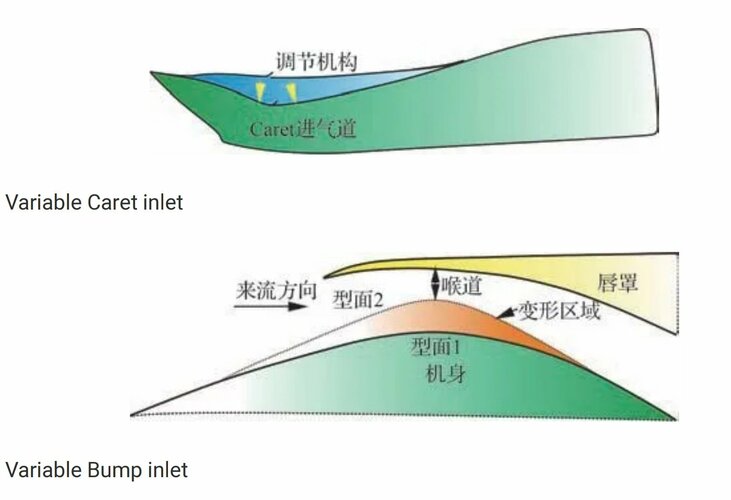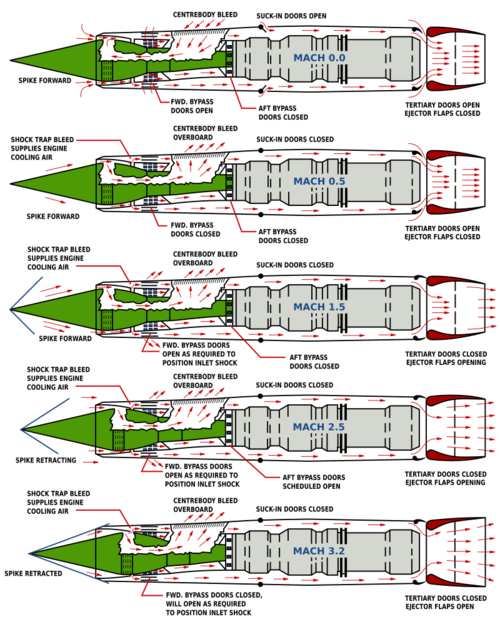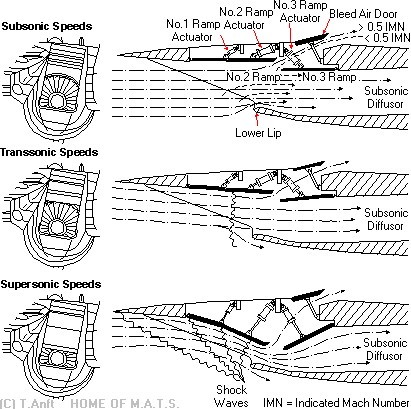FighterJock
ACCESS: Above Top Secret
- Joined
- 29 October 2007
- Messages
- 5,627
- Reaction score
- 5,973
Interesting to compare the J-20 and the J-36 Deino. It is not as long as I was thinking against the J-20.
Not sure why the west needs a response, this is unlikely to be a surprise to US military decision makers. The proof will be in the production aircraft and what happens 20000ft above the Taiwan strait, not what the blogosphere chooses to misinterpret...I wonder what the Western-allied response will be in the short and long term. I can definitely see an NGAD funding increase and perhaps making some of the work more public (like the demonstrators reportedly flying since 2020 or AIM-260).
An interesting set of comments. It tends to gel with the expectation that the 6th gen will forego maneuver for better systems and reliance on power generation. Beyond EW it feels like DEW is the system that will benefit the most from this focus and increase.via @siegecrossbow at the SDF:
In the latest talkshow Yankee says:
1) J-36 will not be a Mach 3 capable aircraft.
2) Yankeesama has talked briefly with J-36 Chief Designer Wang Haifeng.
3) Chief Designer care not much about hard specs such as top speed, max thrust, etc. The important criteria of the fighter is instead power generation capability.
4) J-36 can serve as EW and AWAC to some capacity.
5) No pulsed detonation engine or ramjet on J-36. They can’t provide enough power to even existing fighter aircraft avionics, let alone something as sophisticated as CHAD.
6) Engine design no longer focuses on thrust alone. What’s more important is subsystem for power generation under whole flight envelope. Power regulation system is therefore of foremost importance. An example would be NEV vs ICE or F-15 vs MiG-25.
7) Variable cycle engine will conform to J-36’s design.
8) Yankee once again agrees with SDF assessment that the J-36 is not a simple fighter, fighter bomber, bomber, etc. but a new system altogether. It is more akin to an air based cruiser.
Makes sense. Point 7: maybe they don't want to develop two VCEs...via @siegecrossbow at the SDF:
In the latest talkshow Yankee says:
1) J-36 will not be a Mach 3 capable aircraft.
2) Yankeesama has talked briefly with J-36 Chief Designer Wang Haifeng.
3) Chief Designer care not much about hard specs such as top speed, max thrust, etc. The important criteria of the fighter is instead power generation capability.
4) J-36 can serve as EW and AWAC to some capacity.
5) No pulsed detonation engine or ramjet on J-36. They can’t provide enough power to even existing fighter aircraft avionics, let alone something as sophisticated as CHAD.
6) Engine design no longer focuses on thrust alone. What’s more important is subsystem for power generation under whole flight envelope. Power regulation system is therefore of foremost importance. An example would be NEV vs ICE or F-15 vs MiG-25.
7) Variable cycle engine will conform to J-36’s design.
8) Yankee once again agrees with SDF assessment that the J-36 is not a simple fighter, fighter bomber, bomber, etc. but a new system altogether. It is more akin to an air based cruiser.
Can you provide the source document please ?The RCS values of several combat aircraft and missiles are known from the documents of the Russian air defense systems. For example, the RCS of a Su-27 without external suspensions is 5 m2, with a maximum combat load of 15 m2, the RCS of a cruise missile and an F-117 aircraft is 0.2 m2. "The RCS of a fifth-generation fighter cannot be less than 0.3 m2, due to its design features." Let's assume the minimum value for the F-22 is 0.3 m2.
Speed of the F-117 1000 km/h not more.
B-21 is a bomber , just a bomber.An interesting set of comments. It tends to gel with the expectation that the 6th gen will forego maneuver for better systems and reliance on power generation. Beyond EW it feels like DEW is the system that will benefit the most from this focus and increase.
Air based cruiser, does that make the B-21 a battleship?
The angles of a subsonic aircraft are chosen for other reasonsNow do the angles for the F-117
ЭОП, ЭПР - RCS sourceCan you provide the source document please ?
You don't know those same reasons don't apply here.The angles of a subsonic aircraft are chosen for other reasons

Somehow when i read it the first thing that comes to my mind is F-35. While not to that extrem it does fit (loosely) into those points.An interesting set of comments. It tends to gel with the expectation that the 6th gen will forego maneuver for better systems and reliance on power generation. Beyond EW it feels like DEW is the system that will benefit the most from this focus and increase.
Air based cruiser, does that make the B-21 a battleship?

Exclusive Report: Secrets Technology and Design of New China's Shenyang J-50 Stealth Fighter Revealed
Exclusive Report: Secrets Technology and Design of New China's Shenyang J-50 Stealth Fighter Revealedwww.armyrecognition.com
Can you provide the source document please ?
Thanks. Is there additional context available as to the measured(calculated) RCS numbers of named aircraft ? Is it an average value(at what frequency ?) from all angles, or just certain sectors ?ЭОП, ЭПР - RCS source
The MiG-31 could not be captured by the Tu-95MS radar when it turned on its electronic warfare systems. There are other ways to counter capture besides low visibilityYet, we have had reports by F-15C pilots being unable to lock on the Raptors even within visual range during exercises.
Well, there is an old "send return signal in counter-phase" trick, used by AN/ULQ-6 naval jammer, for example. The real return echo was "cancelled" and the fake one was inserted, with slight delay - so the enemy radar would "see" the target beyond its real position.The MiG-31 could not be captured by the Tu-95MS radar when it turned on its electronic warfare systems. There are other ways to counter capture besides low visibility
Man that images feels lazy. ripping off this guy's image, and the article seems AI made.
View: https://x.com/Rational314159/status/1873225168451190870
From Document on modernization for SA-3/S-125
Is this based on the assumption that the caret intakes are fixed? There could be an assumption based on a paper done by the Chief designer of the J-36 Wang haifeng, that it could incorporate a variable caret intake bump design.The max mach of 2.5 associated with the CAC J-36 is far in excess of reality. I suspect the max mach is in the 1.6 to 1.8 range given the geometry that has been gathered to date, and that is assuming the engines have reheat. An argument could be made the engines do not have reheat. But that is a discussion for another day.

A thought occurred to me - if these systems are indeed real and installed on the J-36, then they would render the idea of dogfighting utterly impossible - these missiles, even though they were designed to shoot down other missiles, would do just as well against aircraft, should they come into range of probably not more than low tens of kilometers.


A thought occurred to me - if these systems are indeed real and installed on the J-36, then they would render the idea of dogfighting utterly impossible - these missiles, even though they were designed to shoot down other missiles, would do just as well against aircraft, should they come into range of probably not more than low tens of kilometers.
There's no point in dogfighting a plane that can throw three dozen missiles at you. And considering this, all the traditional considerations of fighter design (AoA, ITR, STR, max G-s) go out the window.
The max mach of 2.5 associated with the CAC J-36 is far in excess of reality. I suspect the max mach is in the 1.6 to 1.8 range given the geometry that has been gathered to date, and that is assuming the engines have reheat. An argument could be made the engines do not have reheat. But that is a discussion for another day.
View attachment 754272

China’s big new combat aircraft: a technical assessment | The Strategist
China’s aircraft industry celebrated Mao Zedong’s birthday in style, unveiling three aircraft developments that will comprise an air warfare family of systems for the 2030s and beyond. One, from Shenyang, looks like a demonstrator for ...www.aspistrategist.org.au
Do you have links to them, please?
CN113636089A - Slender double-engine air inlet structure and assembling method - Google Patents
The invention belongs to the field of aircraft structure design, and particularly relates to a slender double-engine air inlet channel structure and an assembly method. The double-engine air inlet channel comprises two symmetrically arranged air inlet channels, the two air inlet channels are...patents.google.com
One of the ones I could find for now, I have beena way today.
Gotta be folding fins in that case.At the moment, the best data is given by a length of 23 meters and a span of 24 meters. I am confused by the width of the small weapons bay, now the medium-range missiles do not fit there.
The idea of a fighter without afterburner, whether for faster takeoffs or for going supersonic, is kinda ludicrous.The max mach of 2.5 associated with the CAC J-36 is far in excess of reality. I suspect the max mach is in the 1.6 to 1.8 range given the geometry that has been gathered to date, and that is assuming the engines have reheat. An argument could be made the engines do not have reheat. But that is a discussion for another day.
Gotta be folding fins in that case.
If the side bays are big enough for PL15s, what does that make the overall length of the aircraft?
You or him are not wrong, remember these 2 factors, F-117 has no afterburner.
a variable geometry bump, sorry to say it is a very difficult task; on a caret they use mechanically actuated ramps, like on any other fighter such as Panavia Tornado or F-15, I mean they have several ramps and the mechanisms to move it.Is this based on the assumption that the caret intakes are fixed? There could be an assumption based on a paper done by the Chief designer of the J-36 Wang haifeng, that it could incorporate a variable caret intake bump design. View attachment 754271


I don't even believe that it is high Mach capable.a variable geometry bump, sorry to say it is a very difficult task on a caret they use mechanically actuated ramps, like on any other fighter such as Panavia Tornado or F-15, I mean they have several ramps and the mechanisms to move it.
DSI are fixed because the skin of the aircraft, the fuselage itself is fixed, there are no mechanical actuators nor ramps on the bump,
Theoretically seems easy but in reality is a different issue, I am almost 99% this is pure theory, because a real intake needs to narrow the intake throat and move the shocks.
View attachment 754287
If you care to see, you will see the entrance or gap that allows air to enter reduces size a lot, on F-14 you can see barely the engine fan face, so I would like to know how to make the skin of the DSI bump expand and do the same without sliding and moving back and forth as on SR-71 or making a smaller gape as on F-14 based upon what material that can increase size at will almost like human skin, honestly I doubt it is possible to make, at least I do not think the Chinese can really make it beyond theory.
In my opinion that aircraft is slightly supersonic, but it does not go very fast it lacks also big vertical tails and fast aircraft always needs some way to control the aircraft at mach 3 even at Mach 2, in my personal opinion is not really supersonic it might go around Mach 1.3 and barely will be controllable on wing trailing edge elevons, ailerons and split rudders, sorry but I think all that info that it goes Mach 3 seems Walt Disney or transformers fantasy
View attachment 754288
